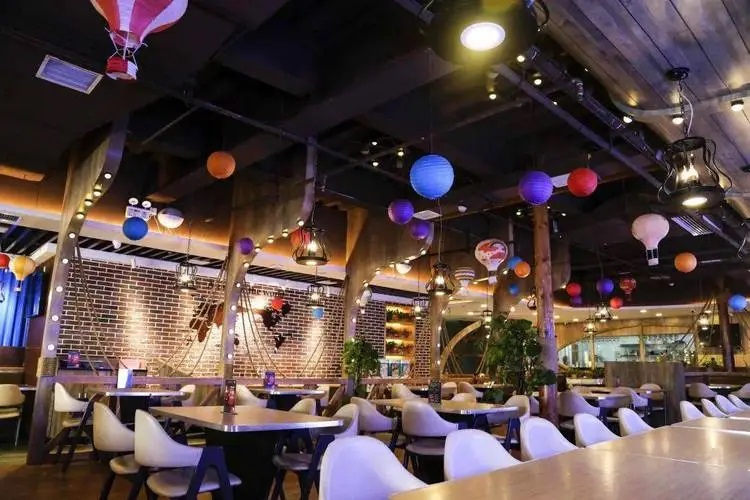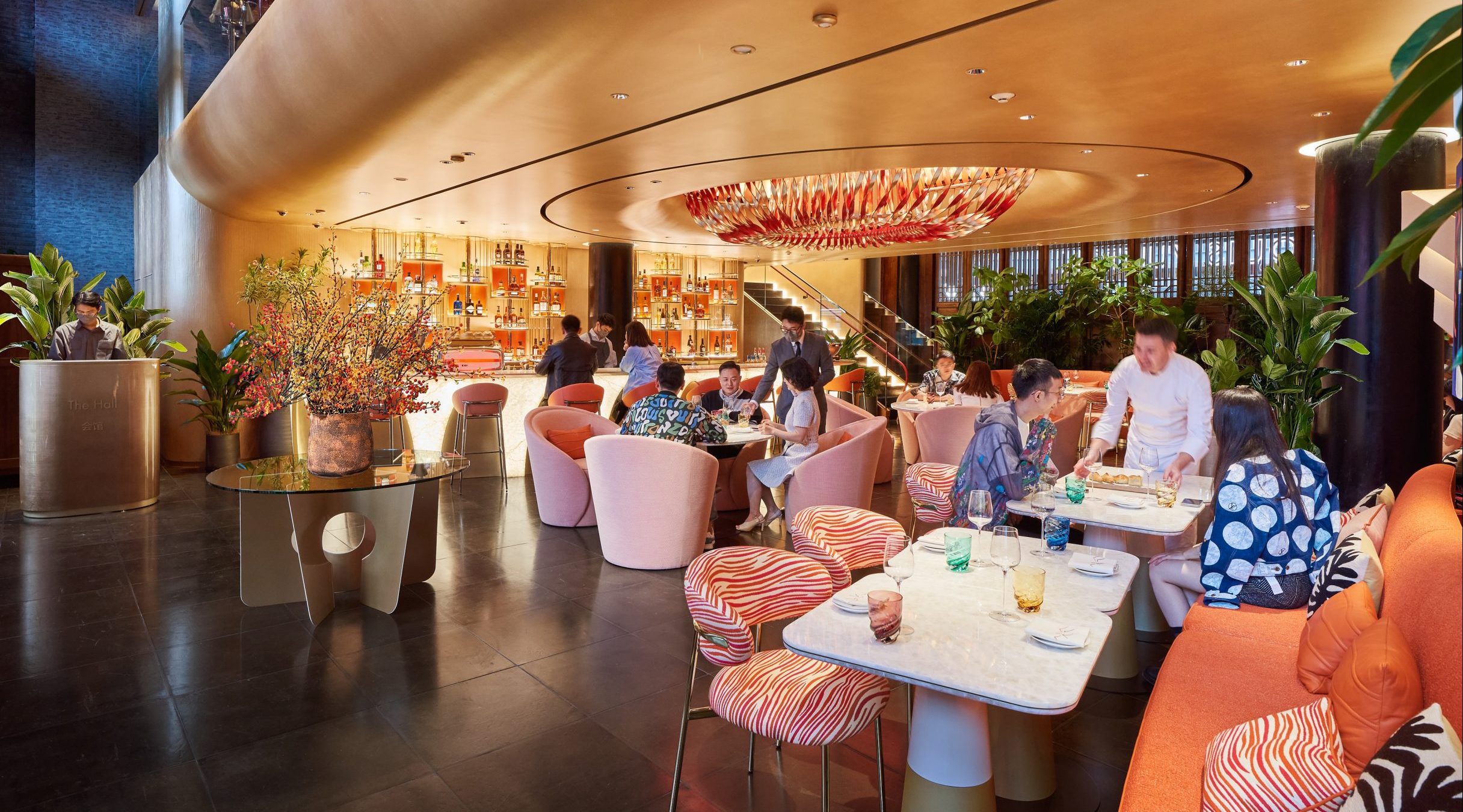Restaurant project list | Commercial kitchen project | Restaurant business China
The restaurant industry in China is dynamic and rapidly evolving, driven by changing consumer preferences, technological advancements, and economic growth. While the market offers substantial opportunities, it also presents challenges that require strategic planning, innovation, and compliance with regulatory standards. Here’s an in-depth industry analysis for the restaurant sector in China:
1. Market Size and Growth
- Market Size: The restaurant industry in China is one of the largest in the world, with significant contributions to the country’s GDP. In 2023, the industry was estimated to be worth over RMB 4 trillion (approximately USD 600 billion).
- Growth Rate: The industry has experienced robust growth over the past decade, driven by rising incomes, urbanization, and changing consumer lifestyles. Despite a temporary slowdown during the COVID-19 pandemic, the market has rebounded and continues to grow, especially with the increasing popularity of dining out and food delivery services.
2. Consumer Behavior
- Dining Preferences: Chinese consumers are diverse in their dining preferences, with a mix of traditional Chinese cuisine and growing interest in international cuisines such as Japanese, Korean, Western, and Southeast Asian.
- Health Consciousness: There is a growing trend towards healthy eating, with consumers showing increased interest in organic, low-fat, and vegetarian options.
- Convenience: Urban consumers, especially younger generations, prefer convenience, leading to a rise in fast food, casual dining, and food delivery services.
- Experiential Dining: There is a trend towards experiential dining where the ambiance, theme, and overall dining experience are as important as the food itself.
3. Trends
- Digital Transformation: The integration of technology in the restaurant industry is significant, with widespread use of mobile payments (Alipay, WeChat Pay), online reservations, and digital menus.Restaurant project list | Commericial kitchen project | Restaurant business China 2024
- Food Delivery Services: Platforms like Meituan, Ele.me, and Dada Nexus have revolutionized food delivery, making it a vital part of the restaurant business.
- Local Flavors: There is a resurgence in regional Chinese cuisines, with consumers seeking authentic and nostalgic dining experiences.
- Sustainability: Increasing awareness about environmental issues is driving restaurants to adopt sustainable practices, such as reducing plastic use and sourcing locally.
4. Competition
- Local vs. International: The market is highly competitive with both local chains (Haidilao, Xiabu Xiabu) and international brands (McDonald’s, KFC) vying for market share.
- Street Food and Small Eateries: Traditional street food vendors and small, family-run eateries continue to play a significant role, offering affordable and authentic food options.
- High-end Dining: There is a growing segment of high-end dining establishments catering to affluent consumers and expatriates, offering premium dining experiences.
5. Regulatory Environment
- Food Safety: Food safety remains a top priority, with stringent regulations enforced by agencies like the State Administration for Market Regulation (SAMR).
- Health and Hygiene: Restaurants must comply with health and hygiene standards, including regular inspections and certifications.
- Licensing: Obtaining the necessary licenses (business license, food service license, health permit, liquor license) is mandatory and involves navigating bureaucratic procedures.
6. Economic Conditions
- Urbanization: Rapid urbanization has led to a growing middle class with disposable income, driving the demand for dining out.
- Income Levels: Rising income levels across China, particularly in Tier 1 and Tier 2 cities, have led to increased consumer spending on dining and entertainment.
- Tourism: China’s booming domestic tourism industry also supports the restaurant industry, with tourist destinations seeing high demand for diverse dining options.
7. Challenges
- Rising Costs: Increasing costs for rent, labor, and ingredients are squeezing profit margins.
- Talent Shortages: Finding skilled culinary and service staff is a challenge, particularly for high-end and specialized cuisine restaurants.
- Regulatory Compliance: Keeping up with regulatory changes and ensuring compliance can be complex and resource-intensive.
8. Opportunities
- Expansion to Lower-tier Cities: There is significant growth potential in lower-tier cities where disposable incomes are rising.
- Health and Wellness: The demand for health-oriented dining options presents opportunities for restaurants to innovate their menus.
- Technology Integration: Leveraging technology for operations, customer engagement, and marketing can enhance efficiency and customer satisfaction.
- Culinary Tourism: Capitalizing on the trend of culinary tourism by offering unique dining experiences can attract both local and international tourists.

The restaurant industry in China is experiencing several key trends in 2024, reflecting broader shifts in consumer preferences, technological advancements, and economic conditions. Here are some of the major trends:
1. Health and Wellness
- Organic and Healthy Eating: There is a growing demand for organic and health-focused restaurants, driven by increasing health consciousness among Chinese consumers. Restaurants are incorporating more organic ingredients and offering balanced, low-fat, and low-sugar menu options .Restaurant project list | Commercial kitchen project | Restaurant business China 2024
- Plant-Based Diets: Vegetarian and vegan restaurants are gaining popularity, with more eateries focusing on plant-based dishes that cater to the dietary preferences of younger, health-conscious consumers .
2. Technological Integration
- Digital Ordering and Payments: The use of digital platforms for ordering and payments continues to rise. Apps like WeChat and Alipay are widely used for seamless transactions, while many restaurants have integrated QR code menus and self-service kiosks .
- Smart Kitchens: Automation and smart kitchen technologies are becoming more prevalent. These technologies help streamline operations, reduce labor costs, and improve efficiency .
3. Sustainability
- Eco-Friendly Practices: Restaurants are increasingly adopting sustainable practices, such as reducing plastic use, implementing recycling programs, and sourcing ingredients locally. This trend is partly driven by consumer demand for environmentally responsible dining options .
- Farm-to-Table: There is a growing interest in farm-to-table dining experiences, where restaurants emphasize the use of fresh, locally sourced ingredients .
4. Experiential Dining
- Thematic Restaurants: Unique and immersive dining experiences are on the rise. Restaurants are creating themed environments that offer more than just food, such as interactive dining, live performances, and elaborate interior designs .
- Pop-Up and Concept Restaurants: Pop-up restaurants and concept dining experiences are becoming more common, offering diners a novel and often limited-time experience .
5. Fusion Cuisine
- Culinary Innovation: Fusion cuisine, which combines elements from different culinary traditions, is gaining popularity. Chefs are experimenting with new flavors and techniques to create innovative dishes that appeal to diverse palates .
6. Regional and Traditional Cuisine
- Revival of Traditional Dishes: There is a resurgence of interest in regional and traditional Chinese cuisines. Restaurants are highlighting authentic, local dishes, sometimes with a modern twist, to cater to both locals and tourists looking for a genuine culinary experience .
- Cultural Heritage: Efforts to preserve and promote China’s culinary heritage are leading to the opening of more restaurants focused on traditional recipes and cooking methods .
7. Food Delivery and Takeout
- Growth of Delivery Services: Food delivery platforms like Meituan and Ele.me continue to grow, driven by the convenience they offer. Many restaurants are optimizing their menus for delivery and partnering with these platforms to reach a broader customer base .
- Cloud Kitchens: Also known as ghost kitchens, these are becoming more prevalent. These facilities focus solely on preparing food for delivery, reducing overhead costs associated with traditional dine-in establishments .Restaurant project list | Commercial kitchen project | Restaurant business China 2024
8. Luxury and High-End Dining
- Fine Dining Expansion: High-end restaurants and luxury dining experiences are expanding, especially in major cities. These establishments cater to affluent consumers and international tourists seeking premium dining options .
- Michelin-Starred Ventures: More Michelin-starred chefs and internationally renowned restaurant brands are opening new locations in China, reflecting the country’s growing market for gourmet dining .

How to processing the restaurant project in China?
1. Operational Management
- Daily Operations: Ensure smooth day-to-day operations, including managing staff schedules, overseeing food preparation, and maintaining service standards.
- Inventory Management: Regularly monitor and manage inventory levels to prevent shortages and reduce waste.
- Supplier Relationships: Maintain good relationships with suppliers and negotiate better terms or seek alternative suppliers as needed.
- Equipment Maintenance: Schedule regular maintenance and timely repairs of kitchen equipment to avoid disruptions.
2. Financial Management
- Financial Tracking: Monitor daily sales, expenses, and profit margins to ensure financial health.
- Budgeting: Update and review budgets periodically to align with business goals and market conditions.
- Cost Control: Implement cost-control measures to minimize waste and reduce operational costs.
3. Compliance and Safety
- Health and Safety: Ensure ongoing compliance with local health and safety regulations, including regular inspections and staff training.
- Fire Safety: Conduct regular fire safety drills and maintain fire safety equipment.
- Environmental Regulations: Adhere to local environmental regulations, including proper waste disposal and recycling practices.
4. Staff Management and Development
- Staff Training: Provide continuous training programs for staff to enhance their skills and ensure they stay updated with industry best practices.
- Performance Reviews: Conduct regular performance reviews and provide feedback to staff to foster improvement and motivation.
- Employee Engagement: Implement initiatives to improve employee morale and reduce turnover, such as team-building activities and recognition programs.
5. Customer Service
- Customer Feedback: Collect and analyze customer feedback through surveys, comment cards, and online reviews to identify areas for improvement.
- Loyalty Programs: Develop and maintain customer loyalty programs to encourage repeat business.Restaurant project list | Commercial kitchen project | Restaurant business China 2024
- Service Enhancements: Continuously refine and improve customer service based on feedback and industry trends.
6. Marketing and Promotion
- Digital Marketing: Regularly update and manage your online presence, including your website and social media profiles (WeChat, Weibo, Douyin).
- Promotional Campaigns: Plan and execute promotional campaigns to attract new customers and retain existing ones.
- Community Engagement: Participate in local events and sponsor community activities to enhance your restaurant’s visibility and reputation.
7. Menu Management
- Menu Updates: Periodically review and update the menu based on customer preferences, seasonal ingredients, and culinary trends.
- Specials and Promotions: Introduce special dishes or promotional offers to keep the menu exciting and attract new customers.
- Quality Control: Regularly check the quality and consistency of dishes to maintain high standards.
8. Technology and Innovation
- POS System Updates: Ensure the POS system is up-to-date with the latest software for efficient operations.
- Online Ordering: Maintain and improve online ordering systems for delivery and takeaway services.
- Customer Data Analytics: Utilize customer data to understand purchasing patterns and preferences, informing marketing and menu decisions.
9. Legal and Regulatory Compliance
- License Renewals: Keep track of renewal dates for all necessary licenses and permits, ensuring they are up-to-date.
- Regulatory Changes: Stay informed about changes in local laws and regulations that may affect your restaurant operations.
10. Sustainability Initiatives
- Eco-friendly Practices: Implement sustainable practices such as reducing plastic use, sourcing locally, and minimizing food waste.
- Energy Efficiency: Invest in energy-efficient appliances and lighting to reduce operational costs and environmental impact.
11. Competitive Analysis
- Market Trends: Regularly analyze market trends to stay competitive and relevant.
- Competitor Monitoring: Monitor competitors’ activities and offerings to identify potential opportunities and threats.
12. Expansion and Growth
- New Opportunities: Explore opportunities for expansion, whether through new locations, franchising, or introducing new services.
- Partnerships: Form strategic partnerships with local businesses or influencers to expand your reach and customer base.Restaurant project list | Commercial kitchen project | Restaurant business China 2024
By following this ongoing project list, you can ensure the continuous improvement and success of your restaurant in China, adapting to changes and maintaining high standards in all aspects of the business.

Below is a restaurant project list currently underway or recently completed in China in 2024:
- Oxalis Restaurant, Shanghai – Designed by Sò Studio, this restaurant features interiors inspired by French farmyards with a focus on natural and seasonal cuisine. The ambiance is created using brighter tones and materials such as rattan, wood, and white marble (Luxxu).
- Alain Ducasse at Morpheus, Macau – This restaurant, designed by Jouin Manku, incorporates a dreamscape aesthetic with features like a translucent forest of LED-lit brown-glass cylinders by Lasvit, enhancing its luxurious and unique design (Luxxu).
- Greenwood Eco-Living Restaurant – This restaurant in Chengdu is focused on eco-friendly design and sustainable dining practices. It integrates natural elements into its architecture and menu, promoting green living and sustainability in urban environments (Hospitality Design).
- NUO Hotel Restaurant, Beijing – Part of the NUO Hotel, this dining establishment showcases modern Chinese cuisine with a blend of traditional and contemporary design elements, aiming to provide a luxurious and culturally immersive dining experience (Luxxu).
- Paper Moon, Raffles Hotel, Beijing – Designed by AB Concept, this restaurant features contemporary adaptations of retro materials, creating a stylish and engaging dining environment that reflects both modern and traditional influences (Hospitality Design).
- Louis Vuitton’s The Hall in Chengdu: This luxury brand has opened its first restaurant in China, named The Hall, as part of the Louis Vuitton Chengdu Maison. Located in the Sino-Ocean Taikoo Li shopping mall, this high-end establishment aims to offer an exclusive dining experience alongside luxury retail (Constructionreview).
- Michelin-Starred Restaurants Expansion: Several Michelin-starred chefs and renowned restaurant groups are expanding their presence in China. For instance, global fine-dining chains are setting up new locations in major cities like Shanghai, Beijing, and Guangzhou, catering to the growing demand for high-end culinary experiences (NRA).
- Emerging Regional Cuisine Restaurants: New restaurant projects are highlighting regional Chinese cuisines, focusing on authentic, local flavors to attract both domestic and international tourists. These projects are part of a broader trend to preserve and promote China’s rich culinary heritage (NRA).
- W Shanghai – The Bund: The luxury hotel has introduced a new restaurant, “MOMOYO”, which offers contemporary Japanese cuisine. This addition is part of a broader trend of integrating high-end, diverse culinary options within luxury hotel properties in major cities like Shanghai.Restaurant project list | Commercial kitchen project | Restaurant business China 2024
- Rosewood Guangzhou: This luxury hotel is expanding its culinary portfolio with the addition of “Lingnan House”, a Cantonese restaurant that aims to provide an authentic dining experience reflective of the local culture and cuisine.
- InterContinental Shanghai Wonderland: Known for its unique design, this hotel continues to innovate with its dining options. A new restaurant focusing on sustainable and locally-sourced ingredients is set to open, emphasizing eco-friendly dining practices.
- Wagaya:This contemporary Japanese restaurant in Shanghai has recently opened, featuring a mix of traditional and modern Japanese dishes.
- Modern Sichuan:A new addition to Beijing’s dining scene, this restaurant offers a modern twist on classic Sichuan cuisine.
- Bistro 108: Located in Guangzhou, this bistro focuses on French cuisine with a local twist, set to open in the second half of 2024.
- La Vie en Rose:A high-end French restaurant in Shenzhen, combining luxury dining with innovative culinary techniques.
- Luo’s Kitchen:This restaurant in Chengdu focuses on farm-to-table dining, featuring organic produce from local farms.
- The Green Table:Set to open in Hangzhou, this restaurant emphasizes sustainable and plant-based cuisine.
- Seaside Delights:Located in Qingdao, this seafood restaurant aims to bring a gourmet dining experience to the coast.
- Noodle House 99:A new chain in Shanghai specializing in a variety of noodle dishes, from traditional Chinese to fusion styles.
- Dragon’s Breath BBQ:This new barbecue spot in Beijing combines traditional Chinese flavors with Western barbecue techniques.
- Tea House Serenity:Opening in Xi’an, this establishment offers a combination of high-end teas and gourmet snacks in a tranquil setting.
- Spicy Wok:A hotpot restaurant in Chongqing that introduces innovative spice blends and ingredients to the traditional hotpot experience.
- Lotus Blossom:An upscale vegetarian restaurant in Suzhou, focusing on delicate flavors and artistic presentation.
- Harbor View:A new seafood and grill restaurant in Tianjin, providing panoramic views of the harbor.
- Joyful Bites:A family-friendly restaurant in Nanjing, offering a wide range of dishes from various cuisines.
- Phoenix Rises:This luxury restaurant in Wuhan is set to provide an exclusive dining experience with a focus on local Hubei ingredients.
- Street Eats:A casual dining spot in Chongqing that brings the best of Chinese street food into a modern setting.
- Golden Dumpling:A chain rapidly expanding in Shanghai, known for its unique dumpling recipes and creative flavors.
- Herbal Garden:Opening soon in Chengdu, this restaurant combines traditional Chinese medicine ingredients with gourmet cuisine.
- Skyline Rooftop:A rooftop dining experience in Guangzhou offering international cuisine with stunning city views.
- Chef’s Table:A concept restaurant in Shenzhen where diners can enjoy a meal prepared live by top chefs, focusing on seasonal ingredients.Restaurant project list | Commercial kitchen project | Restaurant business China 2024
These projects highlight the dynamic and diverse restaurant industry in China, catering to various culinary tastes and dining experiences (China Daily).
Product Video:  Follow us on Facebook
Follow us on Facebook 
Product Category
| >Cooking Equipment | >Refrigeration Equipment | >Bakery Equipment | >Food Processing Equipment | >S.S. Furniture
| >Food Display Equipment | >Snack equipment | > | >Furniture | >Small Wares

